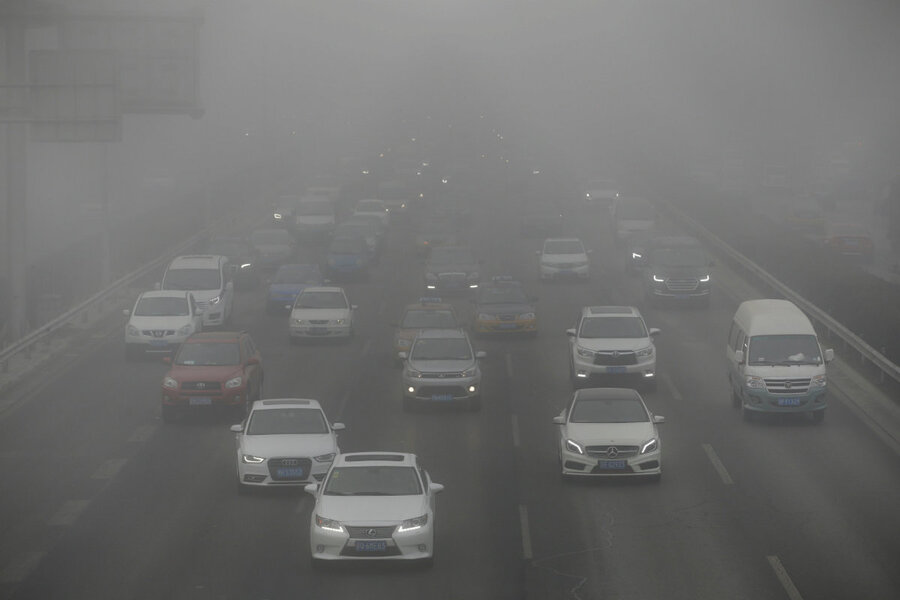Why smog in Asia is an American concern
Loading...
A new study seems to confirm that Earth has no real borders.
Air pollution in Asian countries is linked to the reappearance of smog in the western United States, say scientists from Princeton and the EPA.
Their research, published Wednesday in the journal Atmospheric Chemistry and Physics, shows that air pollution from Asian countries, such as China and India, has drifted across the Pacific Ocean over the past 25 years and has driven up the levels of smog in western states. The findings illustrate the interconnected nature of climate pollution and underscore the need for global cooperation to solve the problem.
One of smog's main ingredients is ozone, which protects the Earth when in the upper atmosphere, but can make air hard to breathe when it hovers near the surface. Ground-level ozone has received global attention in recent years as the toxic air problem in many Asian countries has reached crisis levels.
But the latest study sheds a new light on the issue.
"Twenty years ago, scientists first speculated that rising Asian emissions would one day offset some of the United States' domestic ozone reductions," Owen Cooper, a senior research scientist at the University of Colorado who was not involved in the current study, told Science Daily. “This study takes advantage of more than 25 years of observations and detailed model hindcasts to comprehensively demonstrate that these early predictions were right."
Though recognizing that the US levels of smog respond to many emission sources, as well as short-term weather variations and long-term climatic patterns, the researchers were still able to trace the sources of the smog from western US states.
The culprit: Nitrogen oxide emissions, which contribute to ozone and have tripled since 1990 in Asian countries.
“We conclude that the increase in Asian anthropogenic emissions is the major driver of rising background ozone over the western United States for both spring and summer in the past decades, with a lesser contribution from methane increases over this period,” wrote the scientists.
Global methane from livestock and wildfires contributed only 15 percent of the ozone increase, whereas air pollution from Asian countries, including Japan, South and North Korea, and China, collectively contributed as much as 65 percent.
The team collected smog data between 1980 and 2014 from 16 national parks in the western states, including Yellowstone, Yosemite, and the Grand Canyon, which were ideal spots for the study because of their rural locations, the researchers said.
Their conclusions come at a time when a growing number of countries are starting to tackle air pollution and committing to improve air quality. After experiencing another winter with historic levels of smog pollution in some cities, China rolled out a $360 billion renewable energy plan, hoping it can lead to a cleaner environment, The Christian Science Monitor reported in January.
Researchers said in 2016 that more than 5.5 million people die from air pollution each year, including more than 3 million in China and India.
These findings show the importance of a global perspective, lead author Meiyun Lin told Science Daily.
"Increasing background ozone from rising Asian emissions leaves less room for local production of ozone before the federal standard is violated," she explained.








